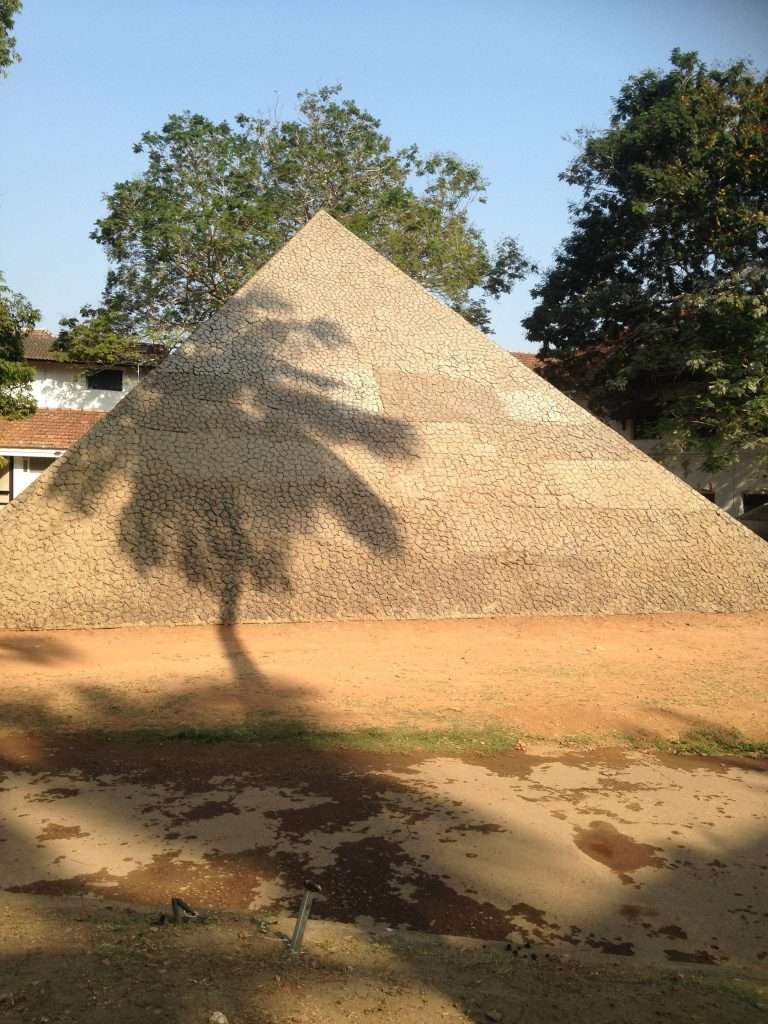In the curatorial note of the third edition of Kochi Biennale, artist Sudarshan Shetty narrates the story of a traveller and a sage. The narrative builds around the preposition of vision and how the biennale attempts to gather multiple positions. The theme, ‘Forming in the Pupil of an Eye’, he writes, is an assembly and layering of multiple realities. It attempts to level difference between what is an assumed immediate experience such as the physical space… it ponders the illusion and reality of vision.”

Raul Zurita’s Sea of Pain
The biennale, unmistakably, borrows from Mumbai-based artist’s insignia and preoccupation with larger-than-life sculptures and installations, and has many such works to boast about. At the same time, an array of audio and video works also form a major part of this 108-annual affair.

P K Sadanandan’s ’12 Stories’

Ales Steger’s The Pyramid of the Exiled Poets

Alex Seton’s Refuge
While these works were within Aspinwall only, I decided to visit Kottappuram Fort, 45 kilometres away from Fort Kochi to see Chinese artist Li Bo’an’s 188X12400 cm scroll. The wash figure painting work chronicles life in Bayan Har, a mountain region in the south-central part of Qinghai province in China. This is where Yellow River begins and since the artists has lived in this province and wanted to chronicle the entire river system from source to mouth, he started making this work almost a decade ago. The depiction of life using meticulously created figures overlooking backwaters on this ruined fort is a beholding site, however, what is unfortunate is the venue — isolated and far, not many art enthusiasts are neither aware, not keen on visiting the site only because of distance. So, this beautiful artwork is actually battling a lost cause on the site.

Martin Walde’s Multiple Choice
This enthusiasm definitely is a positive sign in inferring how the landscape of art is changing in India, and how people too are willing, and most importantly, open to the idea of engaging with arts. Kochi Biennale is just the beginning of a long journey.
